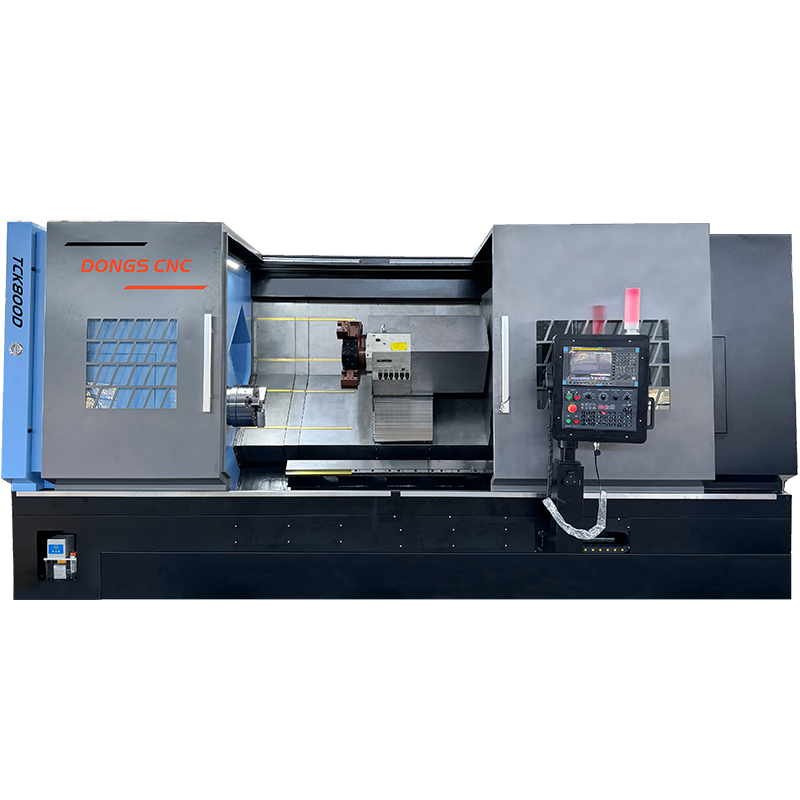For High - Volume Production, Learn How High - Efficiency Turning Centers Can Be a Game - Changer
Understanding High-Efficiency Turning Centers for High Volume Production
High-efficiency turning centers are at the forefront of modern manufacturing due to their enhanced capabilities and precision. These machines are designed to cater to high volume production, offering substantial improvements over traditional CNC turning machines. They incorporate features such as multiple turrets and spindles, enabling simultaneous machining processes, which significantly boost production rates and accuracy. For instance, companies like Mazak have advanced models like the HQR-200/3 NEO, equipped with dual spindles and triple turrets, to reduce cycle times and increase productivity.
Unlike traditional CNC turning machines, high-efficiency turning centers prioritize speed and design adaptability. These turning centers are engineered for rapid, precise operations, often integrating multiple functionalities such as milling and drilling within one setup. This integration leads to faster lead times and reduced costs. According to industry reports, the adoption of these machines in high-demand sectors, such as aerospace and automotive, is expected to grow significantly, driven by the constant need for improved efficiency and volume capabilities. High-efficiency turning centers effectively address these demands, enabling manufacturers to meet high production standards and competitive market needs.
Key Features of High-Efficiency Turning Centers
High-efficiency turning centers are characterized by their advanced technological integrations, notably IoT connectivity that enables real-time monitoring. This connectivity facilitates predictive maintenance, reducing downtime and boosting productivity. For instance, IoT-enabled sensors can alert operators to potential issues before they escalate, ensuring that the machines run smoothly and efficiently.
Additionally, these turning centers come with multi-axis capabilities, significantly enhancing their flexibility in production. Multi-axis configurations allow for the machining of complex part designs in a single setup, reducing the need for multiple machines or setups. This feature is particularly valuable in producing intricate components with high precision, catering to industries with demanding requirements like aerospace and automotive manufacturing.
Efficiency and Cost-Effectiveness in Production
The integration of automation in manufacturing significantly reduces production time, proving essential in industries that demand high volumes. For instance, CNC turning machines and turning centers enable lights-out operations, allowing production to continue uninterrupted without human intervention. This not only accelerates the manufacturing process but also enhances precision with minimal errors. A case study involving a major automotive parts supplier showcased a 30% reduction in lead times after adopting automated systems, underscoring their impact on streamlining workflows and meeting tight deadlines.
Moreover, automated solutions lead to long-term savings through increased throughput and decreased labor costs. Financial projections for businesses that embrace automation reveal potential cost reductions by as much as 50% over several years. As the machinery takes on repetitive tasks, labor resources can be reallocated to more strategic roles, enhancing overall productivity. These strategic moves not only optimize operations but also position companies to respond dynamically to market demands, cultivating a competitive edge in the manufacturing sector.
Real-World Applications of High-Efficiency Turning Centers
High-efficiency turning centers have significantly impacted the automotive industry, where speed and precision are crucial. An example is their use in manufacturing engine components. By automating processes, manufacturers can produce parts with consistent quality and reduced lead times, enhancing overall productivity. This automation enables carmakers to respond quickly to market demands while decreasing production costs.
Similarly, the aerospace industry benefits from the precision and quality that high-efficiency turning centers offer. These machines play a vital role in producing complex aerospace components such as turbine blades and engine housings. Their capability to maintain high tolerances and deliver superior surface finishes ensures that aerospace parts meet stringent standards. This precision not only enhances the safety and reliability of aerospace equipment but also reduces waste, ensuring cost-effectiveness in production processes.
Exploring the Efficient Turning Centers Product
Efficient turning centers combine versatility and precision, offering various models that cater to different manufacturing needs. These machines, essential in modern manufacturing, typically feature 3 to 5 axes, allowing complex operations such as milling, drilling, and threading alongside standard turning tasks. Key manufacturers like DONGS SOLUTION have developed advanced models like the "Efficient Turning Centers," which come with innovative features like a programmable tailstock and high-precision linear guides. Customer reviews often highlight the superior build quality and versatility of these machines, making them a preferred choice for many industries, including automotive and aerospace.
Future Trends in High-Efficiency Turning Technologies
High-efficiency turning technologies are on the brink of transformative innovations, especially with advances in automation and artificial intelligence (AI). One notable trend is the integration of AI-driven predictive maintenance systems that enhance operational efficiency by reducing downtime and proactively identifying potential machine failures before they occur. This enables manufacturers to optimize production schedules and resource allocation, which in turn boosts overall productivity.
Additionally, sustainability is increasingly becoming a focal point in production technologies. As regulatory bodies and consumers alike push for greener practices, turning centers are anticipated to innovate in energy efficiency and waste reduction. These developments will not only comply with emerging environmental standards but also meet consumer preferences for sustainable production practices. Manufacturers who adapt these technologies will likely experience increased competitiveness in the market, aligning their operations with both regulatory and consumer demands.
FAQ
What are high-efficiency turning centers used for?
High-efficiency turning centers are used for rapid and precise machining processes, allowing for high volume production, particularly in industries like automotive and aerospace. They integrate milling, drilling, and multiple axes capabilities to enhance production efficiency.
How do high-efficiency turning centers save costs?
They save costs by reducing lead times and labor expenses. Automation allows for continuous operation, minimizing human intervention and reallocating labor to strategic roles—all of which optimize productivity and reduce operational costs.
What is the role of IoT in these turning centers?
IoT enables real-time monitoring and predictive maintenance, helping to identify potential issues before they cause significant downtime. This technology ensures smooth and efficient machine operation.
Which industries benefit most from using high-efficiency turning centers?
Industries requiring high precision and volume, such as automotive and aerospace, benefit significantly from high-efficiency turning centers due to their ability to reduce lead times and improve product quality.


